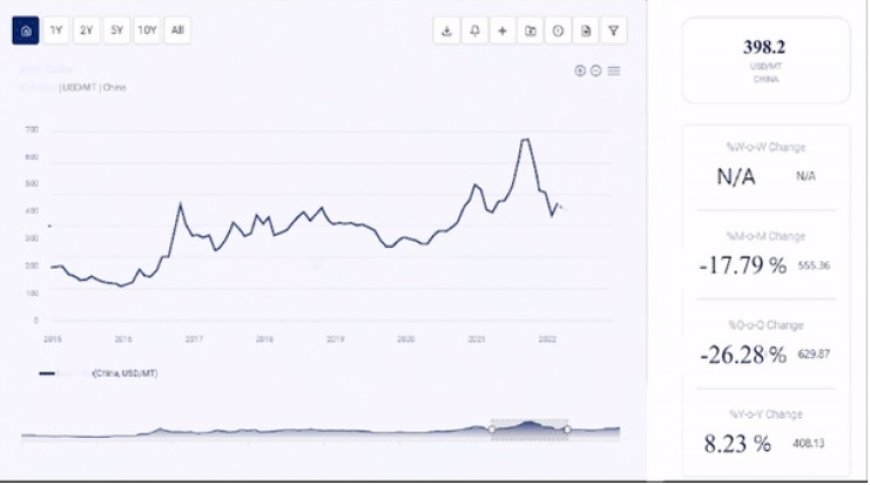Butter Price Trend: A Comprehensive Analysis
Butter Price Trend
Welcome to our detailed exploration of the Butter Price Trend, where we delve into the intricate dynamics of this essential dairy product. In this article, we'll dissect the factors driving price fluctuations, historical patterns, and future projections in the Butter market.
Understanding Butter
Butter, a dairy product derived from milk or cream, is a versatile ingredient cherished for its rich flavor and creamy texture. Widely used in culinary applications, butter serves as a fundamental component in various dishes, from baked goods to savory delicacies.
Request for Real-Time Butter Prices: https://www.procurementresource.com/resource-center/butter-price-trends/pricerequest
Historical Price Trends
The Butter market has witnessed notable price fluctuations over time, influenced by diverse factors such as supply-demand dynamics, milk production trends, weather conditions, and consumer preferences. Analyzing historical trends provides valuable insights into market behavior and aids in anticipating future movements.
Factors Influencing Butter Prices
-
Milk Production: Fluctuations in milk production significantly impact butter prices, as milk serves as the primary raw material. Factors affecting milk production, including weather conditions, dairy farming practices, and government policies, directly influence butter prices.
-
Supply-Demand Dynamics: Consumer demand for butter, shaped by dietary trends, cultural preferences, and seasonal variations, plays a pivotal role in determining prices. Changes in consumer behavior, such as the shift towards natural and organic products, can drive market dynamics.
-
Global Trade: International trade patterns, tariff policies, and currency exchange rates influence butter prices in global markets. Trade dynamics between major butter-producing and consuming regions impact supply chains and pricing strategies.
-
Regulatory Environment: Stringent regulatory standards, quality certifications, and food safety regulations impact production costs and, consequently, butter prices. Compliance with these regulations adds to production expenses, affecting market prices.
-
Economic Factors: Economic indicators like inflation rates, GDP growth, and disposable income levels affect consumer purchasing power and overall demand for butter. Economic downturns or recessions may alter consumer spending habits, influencing butter consumption and prices.
Market Outlook and Future Projections
Despite short-term volatility, the long-term outlook for the Butter market remains positive, driven by its widespread use across various culinary applications. However, challenges such as environmental sustainability, animal welfare concerns, and shifting dietary preferences towards plant-based alternatives may shape future market dynamics.
Conclusion
The Butter Price Trend reflects a complex interplay of supply-demand dynamics, milk production trends, global trade policies, regulatory standards, and economic factors. By closely monitoring these trends and understanding their implications, stakeholders can adapt their strategies, mitigate risks, and capitalize on opportunities in the Butter market.

 leofrank
leofrank 






